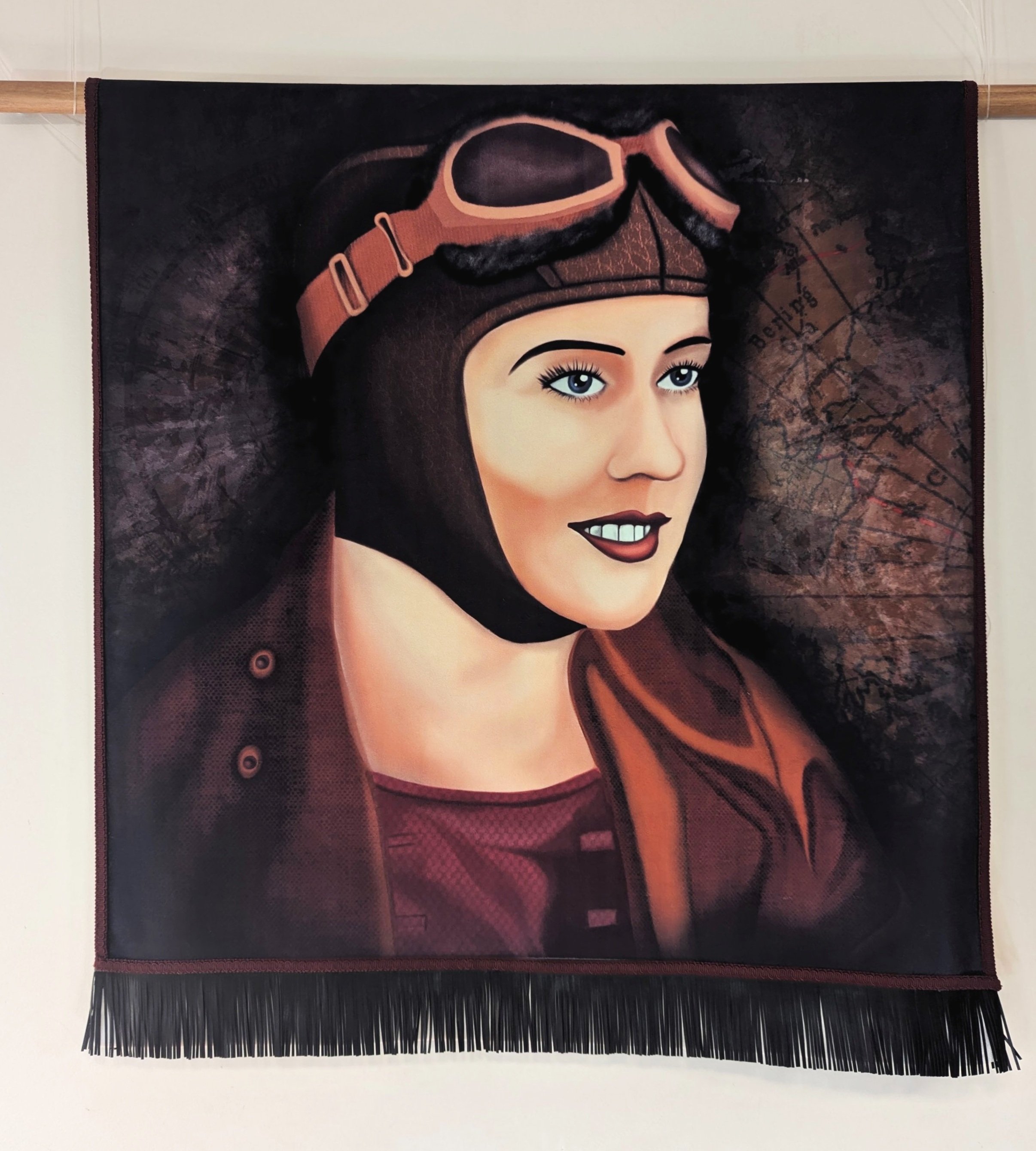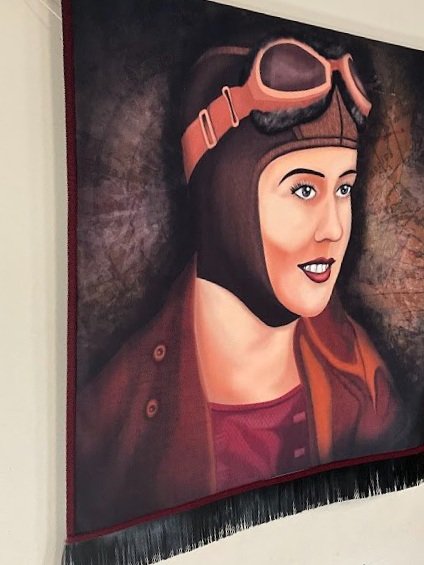Lady of the Skies
Belonging to a series of 3D hanging works titled “The Aviatrix,” this piece is inspired by the incredible female pioneers of early aviation.
Digital Image printed on velvet with leather fringing, decorative trim and wood
Belonging to a series of 3D hanging works titled “The Aviatrix,” this piece is inspired by the incredible female pioneers of early aviation.
Digital Image printed on velvet with leather fringing, decorative trim and wood
Belonging to a series of 3D hanging works titled “The Aviatrix,” this piece is inspired by the incredible female pioneers of early aviation.
Digital Image printed on velvet with leather fringing, decorative trim and wood
This work is printed on luxurious velvet fabric, which has been meticulously sewn with leather fringing and decorative trim. Helen Richey An accomplished aviatrix, a pioneering female, who in 1929 became the first female commercial airline pilot in the United States. Richey was also first to fly dedicated airmail flights and one of the first female flight instructors. In 1933, she and her flying partner, set a women’s fuelling endurance record of 237 hours and 42 minutes above the city of Miami in their airplane, the “Flying Boudoir.” Three years later, Richey set a women’s international light plane record of 100 kilometers travelled in 55 minutes. As a co-pilot in the Bendix race that same year with Amelia Earhart, she secured the women’s light plane altitude record. During World War II, Richey became the first female pilot from Pittsburgh, Pennsylvania at the war front in Europe. In 1933, a daring achievement in endurance flying took place over Miami. Two women pilots took turns at the controls while the other rested, remaining airborne for nearly 10 days. They collaborated with another pair of pilots who made 83 flights to keep them supplied with fuel, food, water, and repair materials. The refuelling process was quite hazardous; one of the women had to climb out onto the wing, grab the fuel nozzle as it descended from the tanker aircraft, and insert it into the fuel tank. This activity was perilous not only because of the risk of falling, but also due to the possibility of being sprayed with gasoline. Everything was going smoothly until six days into the flight when the fuel nozzle came loose, snagging on the wing and ripping the fabric. The pilots faced a crucial decision: they could either abandon their endurance attempt or attempt to repair the wing while still in flight. In a remarkable display of bravery, Helen climbed out with a needle and thread in hand and mended the tear. When they finally landed, the two women had set a world record for a refuelling endurance flight, a mark that still stands to this day. Helen Richey is an example of a remarkable flying career hindered by prejudice and insensitivity. Despite being one of the first female flight instructors, she faced rejection from the aviation industry. After the war, she encountered blatant discrimination, as no airline wanted to hire her due to the large number of veteran male pilots seeking jobs.



